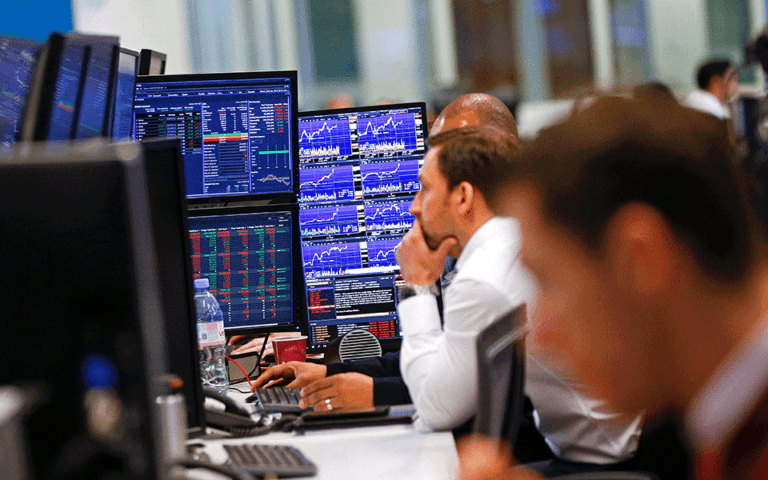Rare Earths: Why Haddad's "gambit" against tariff hikes could fail

Finance Minister Fernando Haddad wants to use critical minerals in negotiations to try to reverse at least part of the impacts of the US tariff hike that came into effect on Wednesday (6). Among them are the so-called rare earths , essential for cutting-edge technologies, electric cars and defense systems.
Haddad's trump card is the fact that Brazil has the world's second-largest reserves of these minerals, behind only China. And Washington is actively seeking to diversify its supply sources to protect its industry and technological autonomy.
In 2020, during his first term, Donald Trump declared a national emergency in the critical minerals sector, aiming to cut dependence on China. Agreements have already been reached with countries like Ukraine and Indonesia to guarantee access to these resources. Brazil appears to be a potential alternative in this scenario.
American interest in Brazilian minerals was made clear by representatives of the U.S. Embassy in Brazil, including Gabriel Escobar, the Chargé d'Affaires. Haddad signals a cooperative format for American investments in the production of components in Brazil, not just exploration.
The minister emphasizes that, since the US is not rich in these minerals, cooperation agreements could lead to the production of more efficient batteries, for example. Haddad reinforces that Brazil is too large to be a "satellite of an economic bloc" and needs to diversify its partners, although he has no interest in distancing himself from the United States, a century-old trading partner.
Analysts interviewed by Gazeta do Povo point out that the attempt to include these strategic minerals in talks with Washington is hampered by an inconvenient reality: without large-scale production and refining technology, Brazil remains nothing more than a promise.
"Brazil doesn't have the same negotiating power that China had [with the United States]," says Mônica Araújo, chief economist at InvestSmart XP. While Beijing controls 70% of global production and 85% of the refining of these minerals, Brazil accounts for less than 1% of global production, exporting mostly low-value-added raw ore.
The disparity is brutal. In 2018, when China threatened to suspend sales of rare earths to the United States during the trade war, the global market panicked. The episode demonstrated the strategic power of these elements. Brazil, however, with its vast, unexplored reserves, remains hostage to its own structural incapacity.
China's technological and productive dominance of rare earthsBeyond just being a promise, Brazil is also a hostage to China when it comes to rare earths. The Asian giant not only has the world's largest concentration of reserves, but is also the world's largest producer—70% of production—and controls over 85% of the world's refining capacity, in addition to possessing the technology for extracting and separating these minerals.
"This dominance gives China asymmetric power over prices and long-term contracts in the global market," says João Alfredo Nygaray, professor of geopolitics at the Pontifical Catholic University of Paraná (PUC-PR).
Other factors that make Brazil hostage to China are its insignificant production (less than 1% of global supply), the lack of technology to separate rare earths on a large scale, the lack of a national supply chain, the fragile institutional environment, and the need for investment and time for Brazil to become a relevant global player .
Abyss between potential and reality: why isn't Brazil taking off with rare earths?The PUC-PR professor is categorical: "Despite having the second-largest rare earth reserves in the world, the country is unable to transform this asset into geopolitical negotiating power." The diagnosis points to deep structural problems that are hindering Brazil's advancement in the sector.
Internal bottlenecks: regulation, technology and investmentThe first obstacle is technological. Of each ton of ore extracted, only about one kilogram contains the truly valuable minerals—and Brazil lacks the technology to separate and refine them. Refined ore can be worth up to 20 times more than raw ore, but this lucrative stage remains concentrated in China, the United States, and Europe.
"Without control over refining, Brazil is forced to export to technology centers that concentrate the most profitable stages," explains Nygaray.
The unstable regulatory environment exacerbates the situation. Mining and environmental licensing rules are constantly changing, scaring away investors who need predictability for long-term projects. Land disputes and the lack of a consistent legal framework complete the picture of legal uncertainty that paralyzes billion-dollar investments needed for the sector.
Deficient infrastructure and a lack of adequate geological mapping—only 27% of the country's territory has been assessed—are additional barriers. The National Rare Earth Plan expects to complete mapping only by 2034, a deadline incompatible with the current geopolitical urgency.
The geopolitical chess game: Brazil under pressure between the US and ChinaBrazil's subordination to the Chinese market is almost total. By 2024, Beijing had absorbed virtually all Brazilian rare earth exports, creating a dependence that undermines any attempt at trade diversification. This reality places the country in a delicate position in the geopolitical chess game between the United States and China.
Washington views Brazil as a "supplier directly integrated into the Chinese supply chain," a perception that could lead to severe diplomatic and trade consequences. If the US tightens sanctions against countries that increase Beijing's dependence on critical minerals, Brazil could become the target of pressure and restrictions.
The situation is complicated by Donald Trump's erratic tariff policies. "In geopolitics, there is no power vacuum," warns Nygaray. The tariffs imposed by the Republican end up pushing countries like Brazil "into China's lap." The example of coffee is illustrative: after the American tariffs, Beijing authorized 183 Brazilian companies to export the product, expanding its influence over the country's agribusiness sector.
A promising but distant future for rare earthsThe transformation of Brazil's potential into productive reality will not be quick. Current production, at just 20 tons per year, could jump to 5,000 tons by 2028, with projects in Goiás and Minas Gerais. By 2035, Brazil could reach between 5% and 10% of global supply—still without its own refining capacity.
"It's like the pre-salt layer," compares Mônica Araújo of InvestSmart XP. "The change in status took almost ten years after the discovery, but it brought significant investment volumes and a differentiated Brazilian participation in the global market." For rare earths, the analyst projects a similar timeframe: between five and ten years for significant changes in Brazil's position.
Billion-dollar projects and investments underwayDespite the challenges, the outlook is promising and is attracting significant investment. A study by UBS Global Wealth Management points to three major mining projects under analysis—two in Poços de Caldas, Minas Gerais, and one in Minaçu, Goiás—which are expected to receive over R$3 billion in investment. In terms of lithium, the Ministry of Mines and Energy (MME) estimates investments of up to R$15 billion by 2030.
The entry into operation of new projects, such as the Serra Verde mine in Minaçu (GO), is already reflected in the increase in rare earth exports in 2024. The MME expects Brazil to significantly expand its production and export of rare earth compounds in the coming years, driven by solid geological assets, technological advances and a stable regulatory environment.
To overcome the high risk of mineral research and dependence on foreign capital, BNDES, in partnership with Vale, announced the creation of a fund to finance research, development, implementation or operation projects involving strategic minerals, with contributions that could reach R$2 billion.
gazetadopovo





